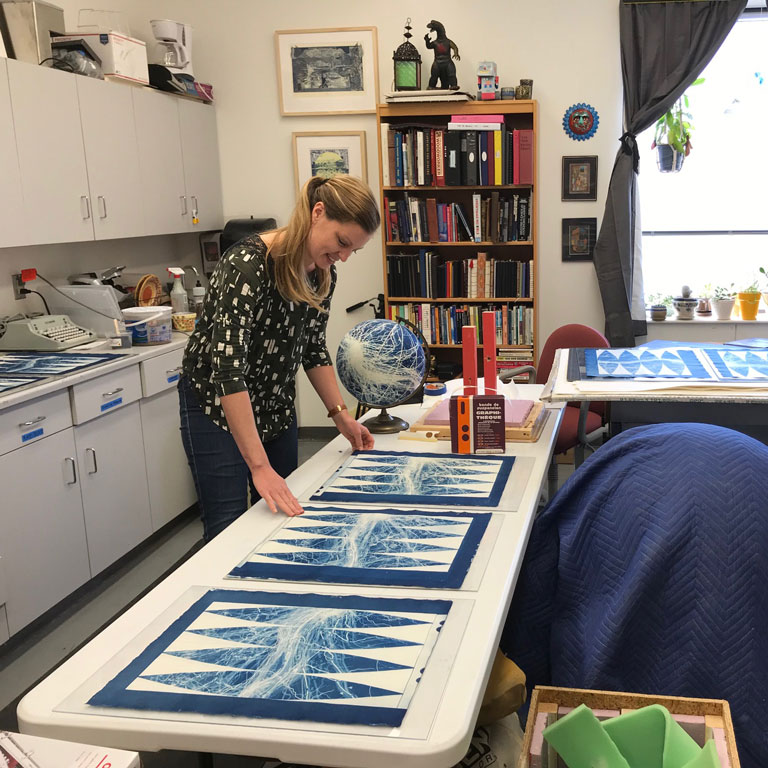Since at least the 15th century, artists have used presses and other analog tools to create two dimensional prints and three-dimensional physical artworks. Since 2017, Assistant Professor Susanna Crum, in the IU Southeast Department of Fine Arts, has expanded the toolbox using 21st-century computer-driven tools – such as digital imaging software and CNC (Computer Numerical Control) tools – to transform two-dimensional objects like maps into unique three-dimensional artworks.
Expanding the creative process with digital tools

The Watershed Globe, Suzanne Crum's most recent work, combines a cast plaster globe, printed maps, and video animation to explore how the Ohio River has been represented differently in maps over time.
The imagery for The Watershed Globe began as a series of digital drawings based on maps from 1790 to 2019, some animated on a screen and others printed by hand with a photographic process called cyanotype. To create a plaster globe, Crum used software to transform her rectangular drawings to fit a spherical form and a CNC laser cutter to create precise components for the plaster casting process. One of the commercial advantages of CNC tools is that they can efficiently produce forms with precision and repeatability.
Crum employs these technologies to create unique artworks. Her introductory Printmaking class is currently using the Fine Arts department’s CNC ShopBot router to carve wood blocks for hand-printed wallpaper designs.
According to Crum, in a sense this isn’t “new” because artists have always used current or new tools from commercial industries in their work. Additionally, many contemporary artists in ceramics, drawing, printmaking and painting already rely on software and electronic devices to sketch and design work at its beginning or document it at its end. Crum, however, merges digital tools like CNC technology with more traditional object-based art media in the actual production phase of art, expanding the possibilities for her finished pieces.
Crum wants to expand how students and other professional artists use digital tools in their creative processes. Her work demonstrates how the Shopbot CNC router can impact contemporary printmaking and how students and faculty can incorporate the router in the design of unique and innovative 2D and 3D artworks.

